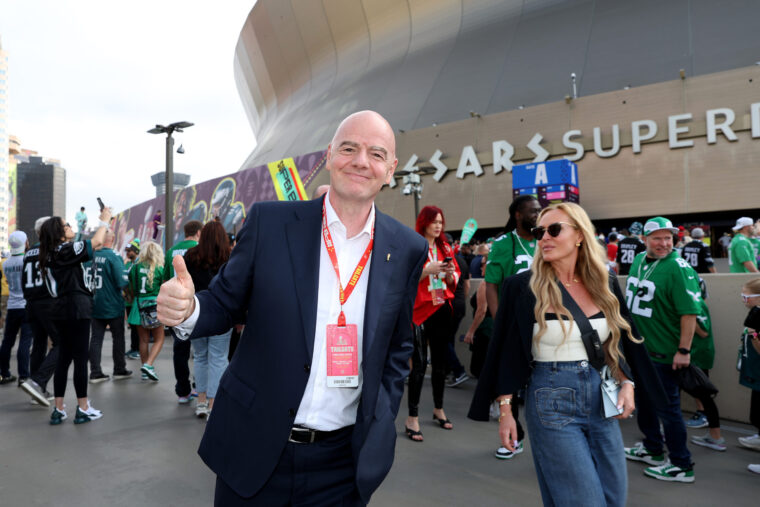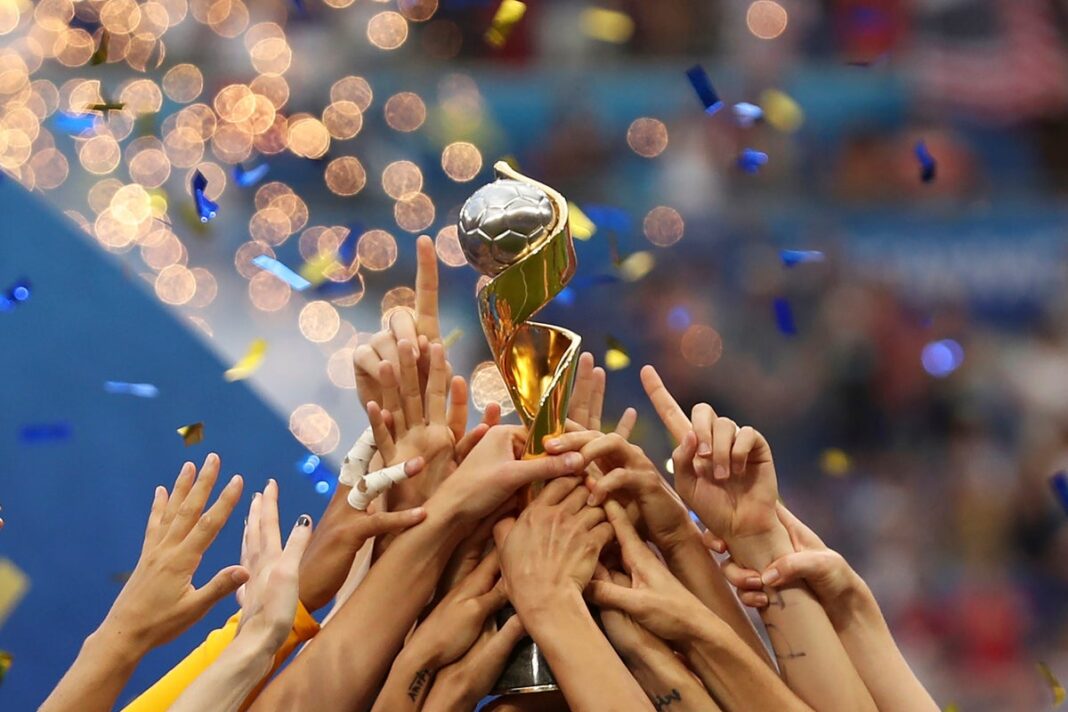The stage is set for the ultimate test of skill, strategy, and determination – the Women’s World Cup. As the world’s top female footballers prepare to clash in a battle for international supremacy, a question lingers in the minds of many: what’s at stake beyond the coveted trophy? The prize money for the Women’s World Cup has long been a topic of debate, with many arguing that the financial rewards do not fairly reflect the level of competition and dedication displayed by the players.

Prize Money Breakdown
Player Payouts

The total prize money for the Women’s World Cup is $152m (£126m), with a performance-based fund of $110m (£86m) and a further $42.5m (£33.5m) for preparation funding and club benefits. Notably, players will receive 44% of the performance-based fund, which will be paid separately from what each country earns.
The distribution of the prize money is as follows:
- Winning team: $270,000 (£212,000) per player
- Runners-up: $195,000 (£153,000) per player
- Third place: $180,000 (£141,000) per player
- Fourth place: $165,000 (£130,000) per player
- Quarter-finals: $90,000 (£70,000) per player
- Round of 16: $60,000 (£47,000) per player
- Group stage: $30,000 (£23,600) per player
- Winning team: $4,290,000 (£3.4m)
- Runners-up: $3,015,000 (£2.4m)
- Third place: $2,610,000 (£2.0m)
- Fourth place: $2,455,000 (£1.9m)
- Quarter-finals: $2,180,000 (£1.7m)
- Round of 16: $1,870,000 (£1.4m)
- Group stage: $1,560,000 (£1.2m)
Team Earnings
The prize money for teams is distributed as follows:
Comparison to Men’s World Cup
Discrepancy in Prize Money
There is a significant discrepancy in prize money between the men’s and women’s World Cups. The record prize money of $152m (£126m) for the Women’s World Cup is dwarfed by the $440m (£365m) prize money for the men’s World Cup in Qatar.
FIFA President Gianni Infantino has announced plans to achieve equal pay between the men’s and women’s World Cup at the 2026 and 2027 tournaments. He has urged media and sponsors to step up to help bridge the gap and has emphasized the importance of equity in football.
Men’s World Cup Prize Money
The men’s World Cup in Qatar had a total prize pool of $440m (£365m), significantly higher than the Women’s World Cup prize money.
FIFA’s Plans for Equality
FIFA President Gianni Infantino has announced plans to achieve equal pay between the men’s and women’s World Cup at the 2026 and 2027 tournaments. This announcement comes as a significant step towards bridging the gap between the two tournaments, with the 2023 Women’s World Cup prize money still lagging behind the men’s tournament.
Infantino has urged media and sponsors to step up and help bridge the gap, stating that women “have the power to convince men” that equity in football can be reached. He emphasized the need for fair pricing for women’s football, not just for the World Cup, but for all competitions and leagues.
Prize Money Fundamentals
Total Prize Pool
The total prize money fund for the 2023 Women’s World Cup is a record-breaking $152 million, with $110 million allocated to performance-based prizes and $42.5 million set aside for preparation funding and club benefits.
This significant increase in prize money is a testament to the growing popularity and recognition of women’s football. The performance-based fund will be distributed among teams, with players receiving 44% of the total amount, a notable change from previous tournaments.
Distribution of Prize Money
- Champions: $4,290,000 (£3.4m)
- Runners-up: $3,015,000 (£2.4m)
- Third: $2,610,000 (£2.0m)
- Fourth: $2,455,000 (£1.9m)
- Quarter-finals: $2,180,000 (£1.7m)
- Round of 16: $1,870,000 (£1.4m)
- Group stage: $1,560,000 (£1.2m)
- Winning team players: $270,000 (£212,000) each
- Runners-up: $195,000 (£153,000) each
- Third: $180,000 (£141,000) each
- Fourth: $165,000 (£130,000) each
- Quarter-finals: $90,000 (£70,000) each
- Round of 16: $60,000 (£47,000) each
- Group stage: $30,000 (£23,600) each
Player Payouts
Funding and Sponsors
FIFA’s Revenue Streams
FIFA’s revenue streams come from a variety of sources, including sponsorships, broadcasting rights, and ticket sales. For the 2023 Women’s World Cup, FIFA has secured sponsorship agreements with major brands like Coca-Cola, Bank of America, Hisense, and AB InBev.
The broadcasting rights for the tournament have been secured by British streaming service DAZN, with the contract reportedly worth around €1 billion ($1.05 billion). These revenue streams will contribute significantly to the overall prize money fund.
Implications of Increased Revenue
The increased revenue generated from the 2023 Women’s World Cup will have a significant impact on the sport and its players. The prize money will provide a much-needed boost to women’s football, helping to bridge the gap between the men’s and women’s tournaments.
The increased revenue will also have a positive impact on the players, providing them with a greater sense of financial security and recognition for their achievements.
Comparison to Men’s World Cup
The 2022 Men’s World Cup in Qatar had a total prize pool of $440 million, significantly higher than the 2023 Women’s World Cup prize money. However, FIFA’s plans to achieve equal pay between the two tournaments by 2026 and 2027 will help to bridge this gap.
Club World Cup
FIFA will award a record-breaking $1 billion in total prize money for the upcoming Club World Cup in the United States. This sum surpasses the prize money awarded at the last World Cups (men and women).
The Club World Cup will feature 12 teams from Europe, six from South America, and four each from Asia, Africa, and North and Central America. Elite European clubs like Real Madrid, Chelsea, and Manchester City are also in line to secure a substantial sum from the lucrative prize pool.
Conclusion
The Prize for Progress: A New Era for Women’s Soccer
In our recent article, “Women’s World Cup prize money: How much do the winners get?” we shed light on the growing disparity between the men’s and women’s soccer leagues, particularly in terms of prize money. The article revealed that the winners of the 2019 Women’s World Cup took home a mere fraction of the prize money awarded to the men’s team, sparking widespread criticism and calls for change. We delved into the history of the women’s game, highlighting the progress made and the challenges still to come. Key points included the establishment of the US Women’s National Team (USWNT) as a dominant force in the sport, the significant increase in prize money for the 2019 tournament, and the efforts of the USWNT to push for equal pay.
The significance of this issue extends far beyond the soccer field. It speaks to a broader societal problem of inequality and pay disparity, where women are consistently undervalued and underpaid. By examining the prize money for the Women’s World Cup, we gain a glimpse into the systemic issues that have long plagued women’s sports, from inadequate funding to limited media coverage. The implications are profound, with far-reaching consequences for the athletes, the sport, and society as a whole. As we move forward, it is essential that we continue to push for equality and fairness in all aspects of women’s soccer, from prize money to salaries to media coverage.
As we look to the future, the 2023 Women’s World Cup in Australia and New Zealand promises to be a turning point in the sport. With increased prize money and growing global popularity, women’s soccer is poised to break through the barriers that have long held it back. The question is, will we seize this opportunity to create a more equal and just sport? Will we recognize the value and worth of the incredible women who dedicate themselves to the beautiful game? The answer lies in our collective ability to push for change and create a more equitable future for all.
